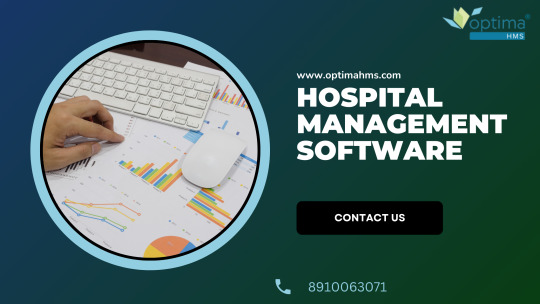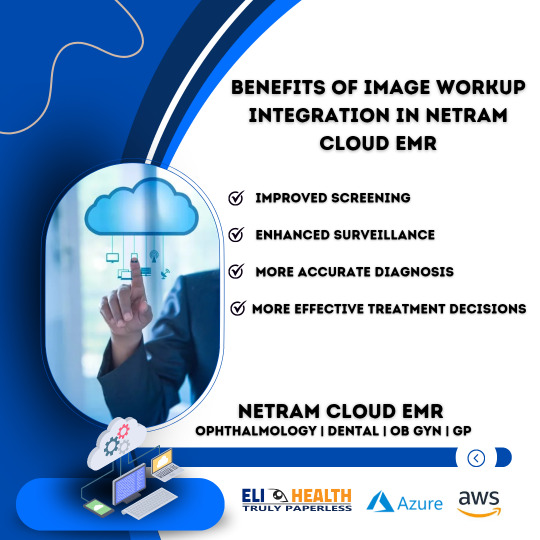#IPD
Explore tagged Tumblr posts
Text

#Saw on goodreads queen ruby having published five new books I can read#like kim k said: get your fucking ass up and work it seems like nobody wants to work these days#she is always there for me than I don't know what to read#ruby dixon#ice planet barbarians#monster romance#ipd#monster smut#rubyverse
183 notes
·
View notes
Text


She's still out there somewhere.
#volvo wagon#volvo 240#volvo#station wagon#appalachian blue#vintage#cars#classic#ipd#blue tint#blues#Cara Tucker
12 notes
·
View notes
Text
I've just been diagnosed with impulsive type borderline personality disorder / impulsive personality disorder bc apparently there's disparity between UK and US diagnostics
5 notes
·
View notes
Text
Beyond Paperless: Why predictive HMIS is the actual game changer | Careaxes
Predictive Hospital Management Information System (Predictive HMIS)
Does your system forecast and alert you about next week’s expected OPD load? While traditional Hospital Management Software (HMS) and Electronic Health Records (EHR) have laid the groundwork for digitization, patients’ evolving expectations and healthcare operations’ growing complexity demand something more powerful. Going paperless is just the beginning – That’s where predictive HMIS (Hospital Management Information Systems) comes into the picture. It’s not just a tool for going digital but a strategic enabler of smarter, faster, and more intuitive care delivery.
Welcome to the era of smart hospital software, where artificial intelligence (AI), machine learning, and real-time analytics reshape how hospitals operate, make decisions, and deliver care.
From Paperless to Predictive: The Evolution of Healthcare IT Systems
The first wave of healthcare digital transformation focused on digitizing records, billing, and scheduling. Hospitals moved from paper files to electronic health records (EHRs), improving access, storage, and compliance. These digital hospital solutions offered a clear upgrade but remained largely reactive.
Predictive HMIS represents the next frontier. With the power of AI in hospital management and healthcare data analytics, these systems don’t just document what has already happened; They anticipate what’s likely to happen next—offering real-time decision-making in hospitals that leads to better outcomes and optimized operations.
What Is Predictive HMIS?
Predictive HMIS is a next-generation hospital management software that goes beyond simple digitization. It integrates data from across departments—OPD, IPD, labs, radiology, pharmacy—and uses predictive analytics in healthcare to generate actionable insights.

Clinical decision support
Hospital workflow automation
Operational efficiency in hospitals
Patient data insights
Using data to predict patient outcomes in hospitals
Why Predictive HMIS Is Better Than Traditional Hospital Software
1. Predictive and Proactive
Traditional systems react to admit a patient, print a discharge summary, and update a chart. In contrast, predictive HMIS forecasts potential risks before they escalate. For example, by analyzing vitals and lab data trends, the system can flag early signs of sepsis or deterioration, allowing clinicians to intervene faster.
2. Connected, Real-Time Intelligence
In traditional systems, data often lives in silos. Predictive HMIS integrates data from every corner of the hospital and applies AI models to it, giving clinicians real-time access to the whole picture. This seamless data flow enables real-time decision-making in hospitals, enhancing both speed and quality of care.
3. Enhanced Operational Efficiency
Predictive software helps optimize hospital resources by anticipating bed occupancy and predicting pharmacy stock levels. By identifying patterns—such as peak OPD hours or high-demand diagnostic slots—it automates staffing, schedules, and inventory, enhancing hospital workflow automation and reducing costs.
4. Improved Patient Outcomes
Perhaps the most critical application of predictive HMIS is using data to predict patient outcomes in hospitals. By analyzing a patient’s history, genetics, lifestyle, and current condition, the system can guide doctors to personalized treatment plans, resulting in better recovery rates and lower readmissions.
5. Stronger Financial Performance
AI-powered hospital management systems can detect billing inconsistencies, predict claim denials, and track revenue leakages. By reducing the average Length of Stay (LOS) and automating financial workflows, hospitals can significantly improve their bottom lines.
How Predictive Analytics Improves Hospital Management: Real Use Cases
Case 1: Early Detection of Patient Deterioration
A predictive clinical decision support system continuously monitors patients’ vitals. If it detects concerning trends—like a drop in oxygen saturation—it automatically alerts the Rapid Response Team. This proactive approach helps reduce ICU transfers and improve survival rates.
Case 2: Resource Planning and Scheduling
Instead of last-minute scheduling and manual adjustments, predictive tools analyze usage trends to recommend optimal appointment slots, allocate technician time, and even plan machine maintenance. The result? Smoother operations and satisfied patients.
Case 3: Predicting Readmissions
A smart hospital software solution can examine data such as discharge summaries, comorbidities, and prior visits to identify high-risk patients likely to be readmitted. Hospitals can employ early intervention strategies to improve care and avoid financial penalties.
Predictive HMIS vs Standard EHR Systems: A Comparative ViewFeatureStandard EHR SystemPredictive HMISData TypeStructured clinical documentationStructured, unstructured & externalFunctionRecord-keepingPrediction, analysis, and alertingDecision SupportLimitedReal-time, AI-poweredWorkflow AutomationBasicAdvanced with forecastingPatient Outcome PredictionNoYes
https://careaxes.com/wp-content/uploads/2025/04/3-image.jpg
Smart Hospital Systems That Go Beyond Paperless
Imagine a hospital where:
An AI model flags a high risk of cardiac arrest from ECG and EHR data.
A dashboard forecasts next week’s OPD load.
Staff duty rosters are auto generated based on availability and patient traffic.
The pharmacy system automatically reorders critical drugs based on prescription trends and upcoming seasonal illnesses.
These are not futuristic ideas—they are real features of innovative hospital systems that go beyond paperless, already implemented in some of the world’s top institutions.
Benefits of AI-Powered Hospital Management Systems
Higher Clinical Accuracy – Machine learning identifies patterns experienced clinicians might miss.
Reduced Administrative Burden – Automating billing, registration, and reporting saves valuable time.
Better Patient Engagement – Automated follow-ups, personalized care, and reminders improve satisfaction.
Improved Compliance – Systems generate real-time audit logs and reports to ensure smooth regulatory checks.
Enhanced Staff Satisfaction – Less burnout, streamlined workflows, and tools that assist rather than overwhelm.
The Impact of Predictive Data on Hospital Operations
Hospitals generate an overwhelming amount of data daily. Without predictive models, this data remains underutilized. With predictive analytics, this data becomes a strategic asset.
Hospitals can now:
Forecast disease outbreaks based on demographic and environmental data.
Plan budgets based on utilization trends.
Identify service gaps by analyzing patient feedback and operational data.
Track KPIs across departments in real time.
Prioritize high-risk patients, ensuring timely interventions.
These capabilities significantly amplify the impact of predictive data in hospital operations, leading to measurable improvements in care quality and efficiency.
The Future of Hospital Management with Predictive Software
The future of healthcare lies at the intersection of AI in hospital management, big data, cloud technology, and patient-centred care. Predictive HMIS will be the digital backbone of this transformation.
What’s on the horizon?
Voice-enabled clinical documentation for hands-free charting.
Custom dashboards for every stakeholder—from nurses to CEOs.
Automated compliance reporting to simplify audits and reduce penalties.
Interoperability across diagnostics, wearable devices, and telehealth platforms.
This is the future of hospital management with predictive software—a future in which hospitals are not just treatment centers but intelligent ecosystems focused on prevention, personalization, and precision.
Going paperless was just the beginning. The fundamental transformation begins when hospitals move beyond paperless hospital management and embrace predictive systems that understand, analyze, and act.
https://careaxes.com/wp-content/uploads/2025/04/Future-trends.jpg
While going paperless was once considered the gold standard for hospital digitization, CAREAXES redefines what’s possible with its Predictive HMIS. This refers to transforming healthcare operations with intelligent foresight. By integrating AI, machine learning, and real-time analytics, CAREAXES empowers hospitals to move from reactive to proactive care.
From anticipating weekend staffing needs to optimizing bed occupancy based on historic trends and seasonal spikes, CAREAXES helps administrators make smarter decisions—before challenges even arise. Its predictive engine doesn’t just track patient movement; it anticipates it. Whether flagging potential ICU congestion a day in advance or signalling likely discharges, CAREAXES equips care teams with a crucial head start.
But it goes even deeper. By identifying recurring patterns—like complications linked to specific surgical teams or supply batches—the system sets intelligent alerts based on vitals and lab values. This proactive risk management transforms clinical outcomes, reduces readmissions, and elevates patient safety.
In a healthcare environment where every second matters, CAREAXES doesn’t just collect data—it converts it into timely, actionable intelligence. It’s the evolution of hospital management from digital convenience to predictive excellence.
If you think CAREAXES can add value to your hospital, clinic, or super-specialty center, just drop us an email. We’ll be glad to set up a demo and show you how CAREAXES can take your operations to the next level.
0 notes
Text




Import Promotion Desk, Germany Successfully Conclude Sourcing Mission 2025 in collaboration with Sri Lanka Export Development Board Read More 👉 https://bit.ly/4bGwxEY
0 notes
Text














Driving Innovation in Healthcare with AI
We were honored to sponsor the Artificial Intelligence in Healthcare 2.0 event at AIG Hospitals, celebrating the transformative power of technology in advancing societal well-being.
The event showcased AIG Hospitals' remarkable leadership in using AI to improve patient outcomes and operational efficiency. Achala Health Services also presented innovative solutions, including the AI-powered discharge Summary Generator and the Patient Engagement Platform, paving the way for a smarter, more connected healthcare ecosystem.
Together, we are redefining the future of healthcare with technology-driven solutions.
https://www.achalahealth.com/patient-centricsolutionsbrouchures
https://www.achalahealth.com/
#AIinHealthcare#Innovation#AchalaHealthServices#AIGHospitals#TechnologyForGood#HealthcareInnovation#dischargesummary#opd#ipd#healthtech#patientengagement#aidrivenpublichealthsolutions#insuranceclaimsexchange#nha#nhcx#clinicalstandards#healthcaredelivery#healthinnovation#ai
0 notes
Text
How IPD Drives Product R&D Toward Commercial Success
Integrated Product Development (IPD) is not just a technical approach but a strategic management philosophy. As an advanced R&D management model, the core of IPD lies in utilizing scientific methods and systematic processes to help enterprises enhance product development efficiency and market competitiveness.
In this process, project management software serves as a critical tool for supporting IPD implementation. Such software provides a unified collaboration platform that enables seamless task allocation and information sharing among teams, breaking down departmental silos and boosting collaboration efficiency.

How IPD improves traditional R&D models
Traditional R&D models are often technology-centered, lacking a comprehensive understanding of market needs. Additionally, the high cost of interdepartmental communication leads to wasted resources and extended product development cycles. In contrast, IPD is a market-driven, cross-functional approach that achieves efficient R&D through systematic management. It emphasizes tightly integrating all aspects of product development, including market research, R&D design, manufacturing, and customer feedback. IPD improves traditional R&D models in the following ways: ● Shifting from Technology-Centric to Market-Driven: R&D objectives go beyond technological breakthroughs to focus on solving customer problems and creating market value. ● Enhancing Cross-Department Collaboration: By establishing multifunctional teams, IPD enables market, R&D, production, and sales teams to collaborate effectively on a unified platform. ● Optimizing Process Management: IPD emphasizes transparency and standardization throughout the R&D process, reducing resource waste. By implementing IPD, enterprises can shorten time-to-market, lower R&D costs and risks, and ensure products are better aligned with market needs, helping them seize competitive advantages.
How IPD drives product R&D toward commercial success
IPD is widely regarded by enterprises as a strategic approach to achieving commercial success. By adopting systematic and integrated R&D processes, IPD helps businesses bring innovative products to market faster and better, enabling them to meet their business objectives.
1. Clear market demand orientation
Market demand serves as the starting point and key to product R&D. IPD employs systematic market research methods to help enterprises identify the needs of target customers and translate those needs into actionable R&D objectives.
● Comprehensive Demand Analysis: In-depth market research and data analysis provide accurate insights into customer pain points and demand trends.
● Demand-Driven R&D: IPD tightly integrates customer needs with technical development, avoiding aimless, technology-driven projects.
For example, an electronics company used IPD to identify young users’ strong demand for longer battery life in portable devices. By concentrating resources on battery technology optimization during the R&D phase, the company launched a product that achieved significant market success.

2. Efficient resource integration and allocation
IPD emphasizes cross-departmental collaboration and the efficient utilization of resources. In traditional R&D models, poor coordination between departments often results in resource waste. IPD addresses this issue through integrated management.
Project management software plays a critical role here. With a unified collaboration platform, such tools effectively connect different departments, allowing team members to perform tasks, share information, and update progress more efficiently.
For example, a manufacturing company implemented 8Manage PM project management software to integrate its marketing, R&D, and production departments into a single platform. This enabled real-time task and resource sharing, significantly improving communication efficiency.
Moreover, the resource optimization features of project management software can help enterprises allocate personnel, budgets, and equipment effectively. For instance, 8Manage PM’s resource management module provides real-time workload visibility for team members, avoiding over-allocation or underutilization of resources.
This resource integration model reduces development costs and improves R&D efficiency. For instance, an automotive manufacturer used IPD to optimize collaboration between its R&D and production departments, successfully shortening the development cycle of a new energy vehicle by 30%.
3. Scientific decision-making and risk management
Scientific decision-making and risk management are key to ensuring project success during R&D. IPD employs stage-based review mechanisms and risk control systems to help enterprises make informed decisions at critical points.
Modern project management software contributes significantly in this area. For example, 8Manage PM offers Gantt chart tools that visually display project schedules and critical paths, enabling teams to identify milestones and phase-specific objectives clearly. Through such visualized management, enterprises can better monitor progress and keep projects on track.
Additionally, many project management tools feature built-in risk assessment modules. These modules use data analysis and simulation to identify potential risks early and propose mitigation strategies. Together, these tools enhance the efficiency and reliability of IPD implementation.
4. Agile response to market changes
Market demands evolve rapidly, and traditional R&D models often struggle to respond quickly due to rigid processes. IPD, with its flexible management framework and rapid iteration capabilities, helps enterprises adjust product strategies in a timely manner.
Here, agile development tools in project management software become particularly valuable. These tools enable teams to swiftly create adjustment plans, update task statuses, and share progress information in real time, fostering more efficient collaboration.
Furthermore, agile tools support iterative and continuous delivery, allowing businesses to launch market-ready products more quickly and respond promptly to user feedback. These technical capabilities significantly enhance IPD’s ability to adapt to changing market dynamics.
5. Indicators of commercial success
Through IPD, enterprises can significantly improve product development efficiency and market competitiveness. The resulting commercial success is often reflected in the following aspects:
● Shortened Time-to-Market: Accelerated product launches help businesses gain first-mover advantages. ● Increased Market Share: Competitive products quickly capture market share. ● Improved Profitability: By reducing costs and increasing product premium capabilities, enterprises achieve steady profit growth.

Enhanced Team Collaboration: 8Manage PM facilitates real-time task allocation and progress tracking, enabling cross-departmental teams to collaborate effectively on a unified platform and eliminating information silos.
Optimized Resource Allocation: The resource management module of 8Manage allows enterprises to allocate R&D resources rationally, assigning personnel and budgets based on priorities and minimizing resource waste.
Support for Stage Reviews and Risk Management: With tools like Gantt charts, milestone management, and risk assessment, 8Manage PM aids teams in making informed decisions and addressing potential risks at every R&D stage.
Quick Response to Market Feedback: The data analysis capabilities of 8Manage PM aggregate customer feedback, enabling businesses to adjust R&D directions flexibly and ensure products meet market needs.
Conclusion
By optimizing demand orientation, resource integration, scientific decision-making, and flexible management, IPD helps enterprises comprehensively improve R&D efficiency and market competitiveness. For businesses seeking to stand out in a fiercely competitive market, IPD is not just a technical tool but a powerful guarantee of commercial success.
0 notes
Text

Optima HMS is the advanced Hospital Management Software that redefines hospital operations. Developed by CLUDO Technology Consultants LLP, it streamlines processes from patient registration to pharmacy management, making it an essential tool for hospitals and clinics. The seamless integration of departments increases operational efficiency, patient care, and compliance with healthcare regulations.
0 notes
Text
Ah yes, the keyboard clitoris.

Always makes me proud to be a Mac user.
We ask your questions so you don’t have to! Submit your questions to have them posted anonymously as polls.
576 notes
·
View notes
Text
0 notes
Text
Otra adolescente denuncia al profesor de taekwondo Angelo Gustavo Meza Vera, por tocamientos indebidos
Texto y vídeo entrevista: Leonor Pérez-Durand/Periodista «Buenas tardes srta quería conversar con usted y el abogado me dice que no, que ya está todo en la vía judicial, y que según los resultados finales del proceso, se demandará penalmente a las personas que estuvieron involucradas con las calumnias vertidas». Esta es la respuesta de Angelo Gustavo Meza Vera, profesor de taekwondo que cuenta…

View On WordPress
#8M#AbusoDeMenores#AbusoSexualDeMenores#ArtesMarciales#DefensoríadelPueblo#IPD#LeonorPérezDurand#MIMP#MINISTERIOPÚBLICO#MINJUSH#MujeresMIgrantes#MunicipalidadDeSanBorja#MunicipalidadDeSurquillo#PoderJudicial#SOMMI#Taekwondo#teleoLeo#VacacionesÚtiles#teleoLeo.com
0 notes
Text
girl help I almost dropped this big ass baby
1 note
·
View note
Text

Say goodbye to long queues with Smart OPD
Celebrate Navratri with a special offer: 𝟲𝟬-𝗗𝗮𝘆 𝗙𝗿𝗲𝗲 𝗧𝗿𝗶𝗮𝗹 - 𝐇𝐮𝐫𝐫𝐲 𝐎𝐟𝐟𝐞𝐫 𝐯𝐚𝐥𝐢𝐝 𝐟𝐨𝐫 𝐚 𝐥𝐢𝐦𝐢𝐭𝐞𝐝 𝐭𝐢𝐦𝐞
During the free trial, you will have access to all of the features of ETHER HMS, including:
- Patient Registration - Appointment scheduling - Medical records - Billing - Inventory - Reporting etc.
Contact us for more details 📧 [email protected] 📞 +91-70116 57478
#NavratriOffer#smartopd#opd#ipd#OT#ETHERHMS#HospitalSoftware#FreeTrial#tenwaveinfo#hims#navratri#limitedoffer#hurry#healthcare
0 notes
Text

I’m out of ideas …..
#digital art#digital illustration#digital painting#illustration#apple#art#artist#ipd#procreate#comicart#comic panels#mini comic#web comic
0 notes
Text




Strengthening Women-Led Exports: EDB and IPD Germany Launch Phase II of Capacity Building Programme Read More 👉 https://bit.ly/3FhrO09
0 notes
